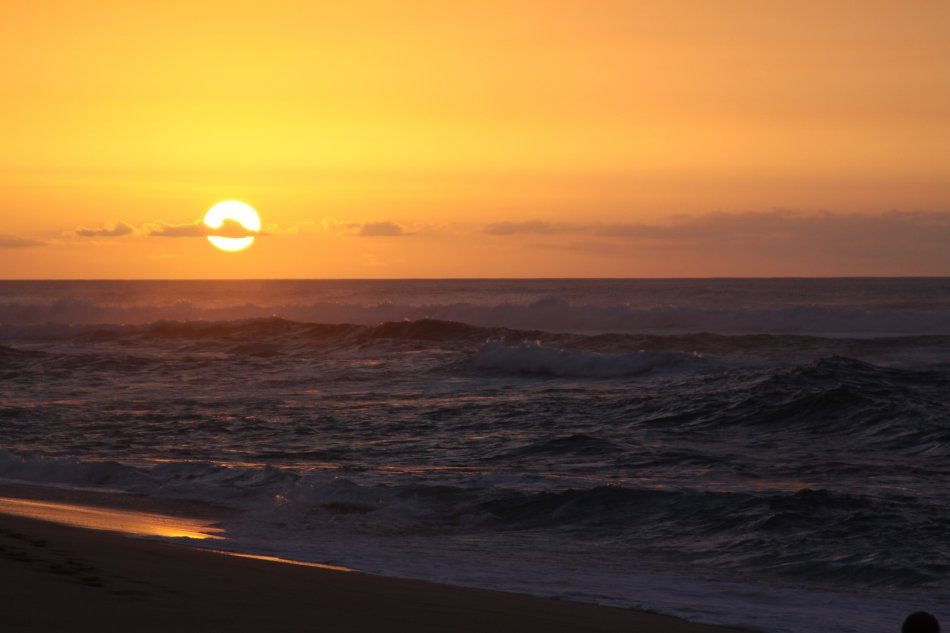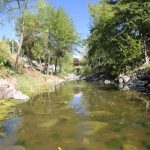The climate in Hawaii is atypical based on it’s particular tropical location. Because of the vastness of water surrounding the archipelago, which is the furthest such island collection from any continent landmass in the world – the climate is rather subtropical. Hawaii experiences two seasons whose extremes are tempered by the presence of the ocean. In summer, from May to September, the temperature rarely reaches 27 degrees Celsius; the record is 38 degrees Celsius. In winter, from October to April, in the lowlands generally the temperature does not fall below 16 degrees Celsius, whilst on the top of the mountains there is snow.
The Hawaiian Archipelago is depicted by its terrific mountains peaks which rise from the ocean, belonging to an outstanding submarine mountain chain called the “Emperor Seamount Chain”. This is of major importance in the islands’ climate, a climate that lures tourists who come from around the world.
Hawaii has a wide range of micro-climates, as temperatures and periods of rain differ quite dramatically from one part of the island to the other, thanks to the mountain peaks, coastal plains and the interior valleys. The archipelago is located in an area called “trade winds”, so named due to breezes that brought the trader’s ships to these islands.
Winds blowing from the northeast in the northern hemisphere and with the southeast in the Southern hemisphere create the inter-tropical convergence zone. These winds form on the northern and eastern slopes of the mountains of Hawaii; this is part of the state that receives significant rainfall – while at the foot of the southern and western slopes there is generally sunny weather and fewer precipitation. As a result, the tourism industry is more developed in the south and west.
The best time for traveling to Hawaii is during Spring, between March and June or Autumn, between September and October. The winter is warm, around 20-30 degrees Celsius, but rains more than 30% of the time and the nights are slightly cooler this time of year. However, throughout the day the temperatures are tropical and balmy. In August temperatures become stifling, due to lack of strong winds and high humidity.
On the island of Kauai, Mount Waialeale is the wettest spot on the planet and receives approximately 11,500 mm of rainfall annually. Of course, the rain stops often at its peaks, leaving room for the sun to warm up the hills below.
If you prefer the cooler zones on Mauna Kea on the Big Island, temperatures can fall slightly below 4 degrees Celsius, and at times you can go skiing. In Haleakala Crater, Kauai or Koke State Park, you can also find cooler temperatures, between 0 and 7 degrees Celsius. If you want to enjoy pleasant rain showers, visit the east and north of the island, while in the west and south, temperatures are higher and dryer.
The good news is that the water temperature in Hawaii remains constant throughout the year, being pleasant, around 25 degrees Celsius to 27 degrees Celsius.






Very nice article, Jamin. We enjoyed it a lot. We’ve been to expensive Hawaii three times and loved everything Hawaiian, especially the locals and its weather. We want to go back and explore more of the Islands but right now it’s been beautiful Autumn weather in Manhattan and we are enjoying the 66 F temperatures and the changing color of leaves in Central Park.
Regards,
M and G
New York City
Hey guys,
I appreciate the kind response! In my opinion, the weather is what makes Hawai’i, Hawai’i! – mind you, this is coming from a biased Islander. But I’m extremely glad that you guys enjoyed your multiple stays there. I’m assuming you both did some snorkeling? I swear, it never gets old when you do it! And, the Lau Lau or the Loco Moco? They are to die for, and there are very few hole-in-the-walls out here in Los Angeles where you can find similar styles.
Thanks for dropping by!
Aloha,
Benjamin